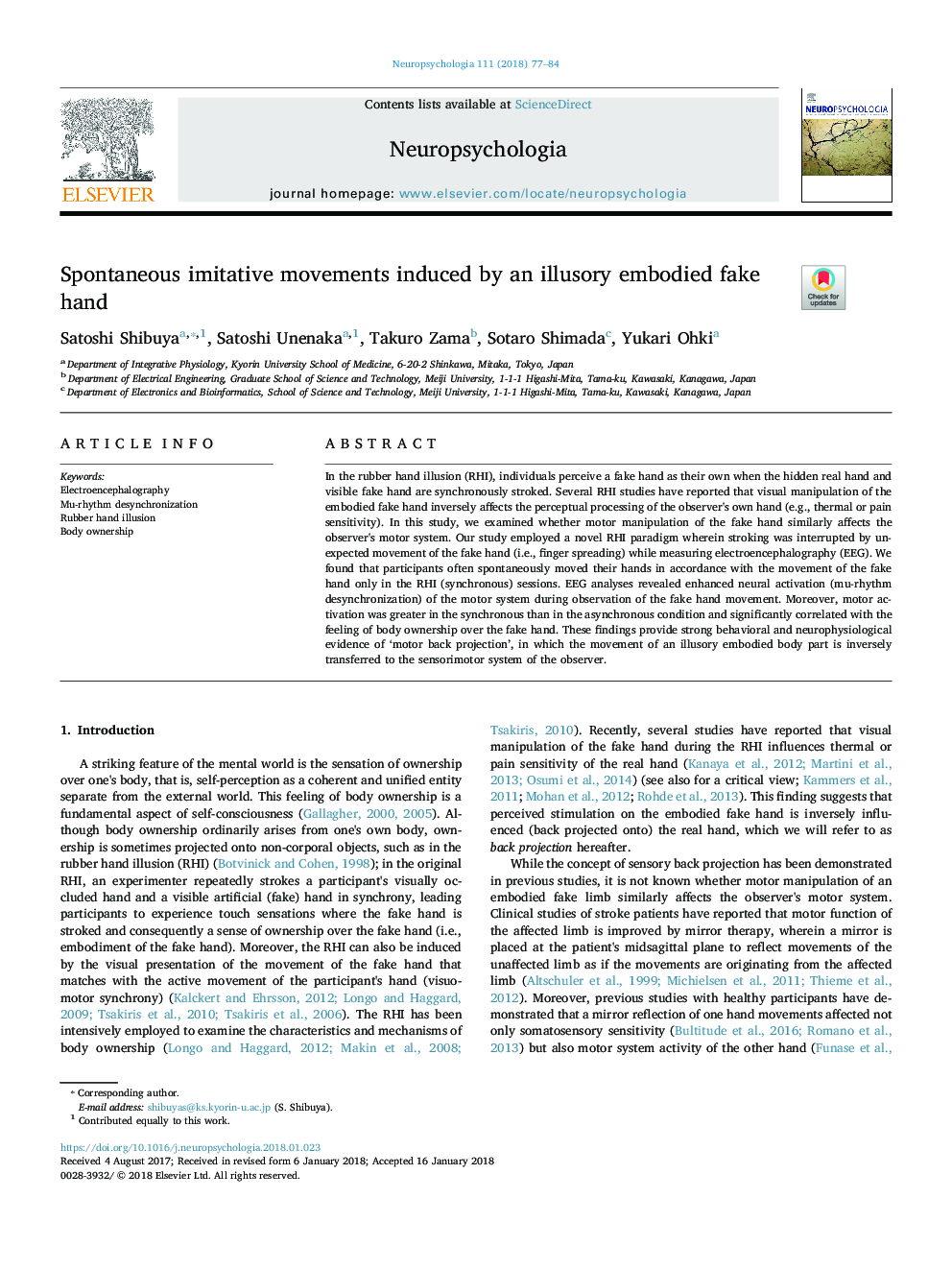| Article ID | Journal | Published Year | Pages | File Type |
|---|---|---|---|---|
| 7317822 | Neuropsychologia | 2018 | 8 Pages |
Abstract
In the rubber hand illusion (RHI), individuals perceive a fake hand as their own when the hidden real hand and visible fake hand are synchronously stroked. Several RHI studies have reported that visual manipulation of the embodied fake hand inversely affects the perceptual processing of the observer's own hand (e.g., thermal or pain sensitivity). In this study, we examined whether motor manipulation of the fake hand similarly affects the observer's motor system. Our study employed a novel RHI paradigm wherein stroking was interrupted by unexpected movement of the fake hand (i.e., finger spreading) while measuring electroencephalography (EEG). We found that participants often spontaneously moved their hands in accordance with the movement of the fake hand only in the RHI (synchronous) sessions. EEG analyses revealed enhanced neural activation (mu-rhythm desynchronization) of the motor system during observation of the fake hand movement. Moreover, motor activation was greater in the synchronous than in the asynchronous condition and significantly correlated with the feeling of body ownership over the fake hand. These findings provide strong behavioral and neurophysiological evidence of 'motor back projection', in which the movement of an illusory embodied body part is inversely transferred to the sensorimotor system of the observer.
Related Topics
Life Sciences
Neuroscience
Behavioral Neuroscience
Authors
Satoshi Shibuya, Satoshi Unenaka, Takuro Zama, Sotaro Shimada, Yukari Ohki,
